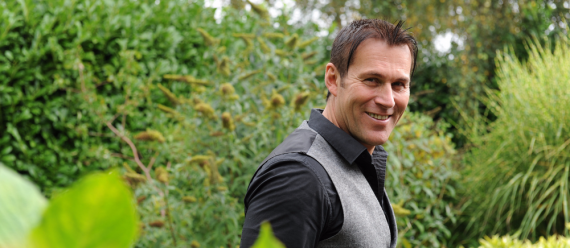by Jukka Laitakari and Tetra Frey-Laitakari
1. WHAT IS RESEARCH ALL ABOUT?
The purpose of this paper is to present a few basic principles of research with the hope that Voice Dialogue practitioners would get ideas how to do research about and evaluate their practice and, in a more general way, the Voice Dialogue community would start a dialogue about the usefulness and directions for research. One of us (Jukka) has been an academic teacher who has had, besides teaching and field projects, several years of evaluation and research experience in the field of health education. One could guess that there is a subpersonality of a researcher in me, although I confess that presently I can get along in life perfectly without an evaluation or research project. As to our connection to Voice Dialogue, we have been operating the Finnish Centre for Voice Dialogue (1) in Eastern Finland since 2001; since 2004 we have had a formal training program for to-be-facilitators. Our first trainee graduated in Spring 2007 and several other are about to graduate. In this paper we present some examples of evaluation and research which we use in our centre.
The term research has been defined in a number of ways, for example; “Research is the process of looking for a specific answer to a specific question in an organized, objective, reliable way” (2) . In the light of this kind of a definition, we all do some research . As Voice Dialogue facilitators and trainers, we ask ourselves questions (such as “Am I getting results in my facilitations?)) and we try to look for answers to these questions (by observing our clients over time). This is already research in a rudimentary fashion! In this paper we try to give you some further tools to move you towards more specific questions and more organized, objective and reliable ways of finding specific answers. We do hope you find the ideas helpful and inspiring!
2. DEVISING SPECIFIC QUESTIONS
In order to develop suitable questions for research one needs to have a definite idea of the subject matter to be researched. As far as Voice Dialogue is concerned, we present here one way of showing our basic concepts and their relationships:
CLIENT ATTRIBUTES (age, sex, problems, symptoms…) > FACILITATION ATTRIBUTES (number of sessions, over what time period, training of facilitator…) > EXPERIENCE BY CLIENT (satisfaction about facilitator and of sessions, insights gained…) > CHANGES IN THE AWARE EGO PROCESS (ease of reaching AE, ability to find balance in life…) > CHANGES IN THE SUBPERSONALITIES (availability, frequency…) > CHANGES IN LIFE QUALITY (health, life satisfaction, general life attitudes…)
This kind of a conceptual “map” leads us towards some specificity in our questions. We can focus on one of the concept at a time and try to describe it fully or develop tools to measure in reliably. The map shows that sometimes the question neens to include simultaneously several concepts. Thus, it is not specific enough to ask whether Voice Dialogue is generally effective; we rather should ask for what types of client(s), performed in which manner, over how many times over what time period Voice Dialogue would be effective. The map also shows that for asking the questions about effectiveness, we can choose from different levels of outcomes. Some are direct results of facilitation such as the AWARE EGO PROCESS, others rather indirect and influenced also by factors other than facilitation such as the QUALITY OF LIFE.
3. DEVELOPING RELIABLE MEASUREMENT TOOLS
Please be not terrified with the word measurement. In social sciences by measurement is meant any activity which classifies people into categories such as “ one has received at least 10 facilitations vs. has not”, “one is able to access the AE process without facilitator help vs. not able to”. As one can see such measurement is bound to involve subjectivity and error in it which needs to be taken into consideration when discussing the results. But the use of an ordinary measurement tape also involves error in terms of observer’s accuracy of reading, of placing the tape properly over the object to be measured etc. All measurement involves some error. The more carefully we construct our instruments and the more carefully we perform the measurement procedure the less there is bound to be error.
Qualitative methods. The simplest way of collecting data is to ask people describe their experience such as though a regular diary. A diary record is called qualitative data. It can be a powerful way of obtaining authentic feelings and experiences and in a research paper excerpts from such qualitative narratives can be very illustrative. However, interpreting such data can be difficult and subjective. Specialists in the qualitative methods can offer methods to make such interpretations more objective and reliable, although these methods are not easy and quick to use. If you make audiotapes of your sessions, you can have qualitative data of your verbal behavior as well as of that of your clients.
Subjective scales. As will be shown in chapter 6 several different forms of subjective scales can be applied to Voice Dialogue research. The scales are usually organized under two extremes (eg. extremely good vs. extremely poor) with several graduations or steps between them. The development of such scales seems easy, but practice shows that in most cases one has to try them out with the target people and gradually streamline them so that they really work. Working means that people understand them easily and that the scales also differentiate those who have high scores from those with low scores. The scores obtained by such scales are bound to vary from measurement to measurement: their reliability is limited. If one, however, combines several subjective scales one can increase their reliability (see an example in chapter 6, example 2).
Observations by an outside observer. Sometimes quite reliable observations can be made by an outside person: People can be easily classified into males vs. females, their age can be obtained from existing records with rather good accuracy, their number of Voice dialogue sessions can be counted from facilitator records (if regularly kept) etc. Even certain personal behaviors can be observed with certain reliability if clear criteria is set for them, such as “the client comes to sessions in time vs. comes late”, “the client looks into your eyes when talking to you vs. looks elsewhere” etc.
Physical measurements can be performed for matters related to physical health such as body weight, heart beat, blood pressure, stress hormone levels, brain’s activity level etc. These kinds of measurement require usually an instrument , but an instrument does not necessarily mean an accurate measurement. The instrument needs to be calibrated ever so often and to be used in the right way. Even such a simple measurement as body weight can vary many kilos depending on the scale used, the clothing used and the time of day of the measurement.
4. CHOOSING AN ORGANIZING DESIGN
When we use some measurement technique it is always done in the context of some design: how often do we measure, over what time period, of how many subjects etc. One of the simplest designs is the retrospective design: we simply ask a person who has experienced a number of facilitations about her experience: “How did you feel about the facilitations” and/or “What changes in yourself/in your health did you experience”? This is a very time-saving design, which unfortunately involves many potential errors due to slips of memory, self-deception, a need to please the evaluator etc. If we include a number of clients, we start having a larger variety of responses, but still the basic sources of error are there. One way of trying to make the design more objective and reliable is to ask a number of similar persons, who have had no facilitations the same questions and compare this “control group’s” response to the facilitation group’s response.
A prospective design includes the same measurements in the beginning as well as in the end of the facilitation period. The memory error is thus eliminated, although the other sources of error are still there. In case we use several measurement across the facilitation period, we start having an idea of the fluctuations happening as well the general directions over time. In case we have a substantial initial follow-up before facilitation, we can have an idea of the baseline to which to compare the facilitation effects. In case we have a substantial follow-up after the facilitation period, we start having an idea of the durability or maintenance of the changes experienced.
How many subjects does one need to do research? One can obtain interesting data and learn even from a single subject, that is called the single case design (see an example in chapter 6, example 2). To obtain more generalizable results one needs, in most cases, a number of subjects from 15-20 to even hundreds. This is called the group design.
The controlled trial design includes an intervention group (which receives facilitations) plus a control group which does not. Both groups receive exactly the same measurements. If the control group is selected (eg. by the process of randomization) to resemble closely the facilitation group, it allows us to start perceiving the real facilitation effect removed from the effects of time just passing or some external random influences happening in people’s lives. The academic community swears for blind blind designs where neither the experimenter, nor the subject knows what the facilition is all about and who is being measured. This would eliminate all kinds of biases on the clients’ or facilitators’ part but is very difficult to implement in the real world.
5. INTERPRETING DATA OBJECTIVELY
Plenty of data does not necessarily mean that we have a specific answer to our original question. We need to simplify and illustrate the data so that we start seeing “the forest for the trees”. We draw graphs, set tables and calculate figures of central tendency (for example the arithmetic average) and try to think what the data possibly could mean. Often the graphs and tables are self-evident: we see clear changes in our clients over time for example. ( An example of a table simplifying data is shown in chapter 6, example 2). Sometimes we are not so sure of the magnitude of the results. In such a case we can consult a statistician who can offer us tools to assess whether our results are likely to be real or produced by the random selection of the groups.
We also try to think whether or not the results obtained are truly due to facilitations. If we do not have a control group, the results may as well be due time passing, to some external factor (big news that hits everybody) or to the tendency of our clients to please us and therefore answer a subjective scale in a falsifying way. Thus to be a researcher or an evaluator requires an ability to be skeptical and curious aboutt what is really behind the results we get.
Finally, research never done in vacuum. It is important that after collecting data we write up a report and circulate it among other practitioners to get their feedback. It is only through several research projects by different researchers that we start seeing the real forest for the trees and start trusting that we truly have a reliable answer to our original question.
6. EXAMPLES OF CURRENT RESEARCH
Five current examples of research in Voice Dialogue are described below with their key concepts marked by capital letters (for the concepts see chapter 2). Based on the discussion in chapters 3-5 above, we also comment on each of the examples. We are interested in whatever other research (even small scale), not mentioned here has been done iabout Voice Dialogue.
EXAMPLE 1. At the start of their training program (1), the Finnish trainees fill a questionnaire of the frequency of 10 pairs of typical opposite SUBPERSONALITIES which they fill again at the end of the training program. The pairs of subpersonalites are: Pleaser vs. Egoist, Pusher vs. Being, Perfectionist vs. Does not care, Rational vs. Feeling, Critic vs. Accepting, Closed vs. Open, Social vs. Loner, Conforming vs. Rebel, Careful vs. Spontaneous. We have chosen these typical subpersonalities with the expectation that any trainee would show some change in at least some of them (of course for a given trainee he or she might also experience change in some subpersonality unique to him/herself). The frequency of experiencing/showing a subpersonalty is asked in a form that does not require previous knowledge of Voice Dialogue, so that the trainees can answer them in the beginning of their training program. An example of the form of the questions (regarding the Pleaser) and the scale used follows: “How often do you experience yourself as one who needs to please others”? 10 = several times a day, 9 = once a day, 8 =several times a week, 7 = several times a month, 6 = several times a year, 5 = a few times in lifetime, 4 = perhaps once in lifetime, 3 = never, but I could think of it happening, 2 = never and I could not even think of it happening, 1 = if it happened, I would feel utterly terrible. Notice the transition between primary and disowned selves at scale values 5 and 4. The scale will be validated as more and more of our trainees will graduate. The trainees as well as anybody intending to have a facilitation with us also fill a one-page questionnaire about general health and bodily and psychological symptoms. This is done to have some idea of the CLIENT ATTRIBUTES. After any facilitation we make up a short summary of the main subpersonalities dealt with plus possible summary comments about the session. This is done to have a general idea of FACILITATION ATTRIBUES such as the number , timing plus the content of the sessions.
Comments: The specific research question evidently is what types of changes our training program produces. The program is very specifically defined: about 150 hours of training out of which personal facilitations include about 20 hours. As there is no control group, the changes to be observed could as well be produced by external factors. The scale used is not very easy to understand and contains a single scale for a single subpersonality. The scale reliability may thus be in doubt. The use of the questionnaire is accompanied by a discussion with the trainee before graduation in which he or she retrospectively recalls the changes experienced in the training program. This will, to some extent, validate the results obtained.
EXAMPLE 2. Pekka Mustonen (3), one of the Finnish trainees , who also studied to be a sexual therapist, did a study of the effects of Voice Dialogues on three of his sexual therapy clients over a seven month period with on an average one session per month. The clients filled a questionnaire of 12 scales of general life satisfaction and attitudes (QUALITY OF LIFE) once per month on a scale of 0 to 100 and also kept a diary (CLIENT EXPERIENCES) over the seven month period. The quality of life concepts measured included sexual well being, life satisfaction, self confidence, sense of mastery, social relations, anxiety, happiness, personal security, decision power, optimism, hostility, energy level. The scale values varied from extremely good (100 points) to extremely poor (0 points) with several detailed descriptions between them of what certain number of points would mean. The client would choose any point along the live between 0 and 100. In two of the three clients there seemed to be a clear trend of improvement in the scales over the intervention period whereas one client showed no change. However, in the diaries of all three of the clients a progress towards self-understanding was clear. An excerpt of the diaries is given here: “ It is incredible how much one learn in therapy… I have gained really important insights: how much I have searched for tenderness and closeness from outside when, however, everything comes from oneself, from taking care of one’s inner child…” (a man of 21-24 years, after the final 7th session, the scales showing, however, no overall trend of improvement over 7 months).
Comments: The main research question to be answered evidently was whether Voice Dialogue can applied to sexual therapy. The results strongly suggest that it can. Particularly when looking at the client diaries we felt that the sexual therapy clients had been experiencing a true Voice Dialogue process. If the we had developed some criteria what is meant by “ a true Voice Dialogue process” the conclusion would be even more reliable. For example we were not able to say with any certainty whether or not the clients developed an Aware Ego Process. The follow-up periods were rather short, the initial one only two weeks and the after-facilitation one fours weeks. Thus the evidence for establishing the initial baseline and that for the maintenance of the results were not very strong. We feel that for the researcher this was, however, a very valuable personal training experience. The scales showed great fluctuations over the intervention period indicating that such scales not only reflect the facilitation effects but also the changing life situations. When, for example, a client reported that he separated from his partner there was great drop in self-confidence and increase in anxiety (irrespective of possible gains in self-understanding). The diary markings seemed to reflect more deeply the deep changes that took place in the clients. When looked at together the scales and the diaries very nicely complemented each other. What follows is an example of a table which we set up with the objective of simplifying the extremely complicated data for each of the three clients. We looked at the scores from the very beginning of the initial follow-up to the very end of the final follow-up and set the criteria that only a change of over 10 points indicated a real change, an improvement (+) or decline (-). 10 points of less would indicate no change (0). The following table shows in how many of the variables there was an improvement vs. decline vs. no change in the three clients:
CLIENT
A B C
_______________________________________________________________________
+ 6 10 3
0 5 1 5
– 0 0 3
Looking at the table one starts immediately having an overall idea of the changes experienced, There seems to be a general trend of improvement in client A, an extremely clear trend in client B and no overall change in client C.
EXAMPLE 3. In collaboration with Dr. Martha-Lou Cohen (4) from Los Angeles we are currently attempting to construct a short questionnaire about the AWARE EGO PROCESS. The questionnaire might include a number of questions like “I often have guilty feelings over what I do” (On would assume that with a highly developed AEP with an easy access of opposite subpersonalities, the person would not easily do things that would result in feelings of guilt). The scale to answer the question might be Agree strongly =5, Agree somewhat =4, Cannot decide whether agree or disagree =3, Disagree somewhat =2, Disagree strongly =1. (It is good to remember that Martha-Lou did her doctoral dissertation on Voice Dialogue already 20 years ago. In her qualitative study she followed clients’s dreams as a guide to their transformation.)
Comments: The development of this kind of questionnaire is very valuable as the Aware Ego Process can be called the ultimate “product” of the Voice Dialogue facilitation. The questionnaire requires still plenty of developmental work and trials before it can be made available for general use. We are happy to welcome ideas and suggestions for the development of the questionnaire.
EXAM PLE 4. Dr. John Dougherty (5) from Tennessee and his coworkers have written an article, in which they postulate, on the basis of modern neuroscience, that the Aware Ego Process is located in the anterior cingulated cortex of the brain.
Comments: This highly sophisticated line of research requires highly sophisticated measurement techniques of the modern neuroscience. Correlational studies of the mentioned part of the brain with increased access to the Aware Ego Process as shown in the questionnaire under development in Example 3 would be of great interest to all of us.
EXAMPLE 5. Dr.Judith Hendin (6) from New York City reported very interesting findings. She went through 10 years of client files of the Conscious Body Process and looked into the self- reports of 140 clients. According to Judith 60 percent of the clients reported that they had recovered completely from their original symptoms, only 15 percent reported no healing at all.
Comments: Judith’s remarkable results definitely deserve to be published. In the publication important aspects to be included are description of the client symptoms (CLIENT ATTRIBUTES), that of the Conscious Body process used (FACILITATION ATTRIBUTES) plus that of measurement technique used to establish healing vs. no healing.
7. BENEFITS TO BE GAINED
We strongly believe that we all in Voice Dialogue can benefit from doing some form of research on our practice. The potential benefits include the followin















